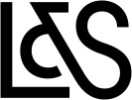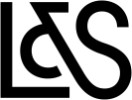Art & Cultural Property Law 2025
Switzerland
1. Art Law Framework
1.1 Relevant Authorities and Legislation
National Law
There are no sweeping statutory rules that regulate art law as such in Switzerland. The most relevant statutes are:
- the Federal Act on the International Transfer of Cultural Property, and its executive Ordinance;
- the Federal Act on Copyright and Related Rights (the “Copyright Act”);
- the Federal Act on Film Production and Film Culture; and
- the Federal Act on Federal Museums and Collections.
In addition, there are other relevant provisions in the Swiss Civil Code, the Code of Obligations, and federal and cantonal tax law, which in practice are relevant in the context of art law.
International Treaties
Switzerland is a party to the UNESCO Convention of 14 November 1970 on the Means of Prohibiting and Preventing the Illegal Import, Export and Transfer of Ownership of Cultural Property (the “1970 UNESCO Convention”) and to the UNESCO Convention of 2 November 2001 on the Protection of the Underwater Cultural Heritage (the “2001 UNESCO Convention”). In addition, Switzerland is a party to many treaties in the field of copyright protection, in particular the Berne Convention for the Protection of Literary and Artistic Works.
Authorities
The relevant authorities in the field of art law are the Federal Art Commission and the Federal Office for Culture. The Federal Institute of Intellectual Property is the relevant authority regarding copyright law aspects of art law.
2. Rights to Artworks
2.1 Artists’ Rights Over Their Art
Copyright law defines works as literary and artistic intellectual creations with individual character, irrespective of their value or purpose. The threshold for individuality is, in general, relatively low. An artist who created a piece of artwork that clears the individuality test will own the copyright in the artwork.
The artist, as the author of the work, has the exclusive right to decide whether, when and how their work is used. In particular, the artist has the exclusive right to:
- produce copies of the work;
- offer, transfer or distribute copies;
- recite, perform or present the work;
- make the work available; and
- broadcast, retransmit or make broadcasted and retransmitted works perceptible.
The author also has the exclusive right to decide whether, when and how the work may be altered or used to create a derivative work.
2.2 Copyright in Collaborative Artworks
Where two or more persons have made contributions to the creation of a work, the copyright is jointly owned by them. Joint authors may only use the work with the consent of all other joint authors, whereby consent cannot be withheld in bad faith. Each joint author may independently bring an action for infringement, but has to request relief for the benefit of all joint owners.
In cases where the individual contributions can be separated, each joint author may use their own contribution independently, provided that this does not impair the exploitation of the joint work.
It is recommended to conclude a detailed agreement on the right to use and license an artwork among all joint artists at an early stage to avoid uncertainties – in particular, in cross-border constellations.
3. Protection Against Plagiarism
3.1 Legal Consequences of Copyright Infringement
Copyright infringement has consequences in civil and criminal law.
The copyright owner can obtain a permanent injunction against any infringing acts, irrespective of whether the infringer knew or should have known about the copyright. The copyright owner can also request damages for copyright infringement, if the infringer is at fault. Fault is defined as wilful infringement or negligence.
In the case of wilful copyright infringement, criminal sanctions are available. Criminal sanctions can include a custodial sentence or a monetary penalty. In the case of infringement committed for commercial gain, the punishment can be a custodial sentence of up to five years.
3.2 Registering Artwork
There is no copyright register in Switzerland.
3.3 Resale Right
There is no resale right in Swiss copyright law.
3.4 Using Copyrighted Images
Images or similar visual works are not treated any differently from other copyrighted works under the Copyright Act.
A licence must be obtained from the copyright owner for almost all uses of copyrighted artworks. Nonetheless, the Copyright Act contains certain exceptions, for which no licence is needed or where a licence can be obtained directly from one of the registered collective rights management organisations. For example, personal use within a circle of closely connected persons, use for educational purposes or use within enterprises for internal information or documentation is allowed without the need for a licence.
A work forming part of a collection accessible to the public may be lawfully reproduced in exhibition and auction catalogues.
Special rules are also applicable for orphan works. Orphan works are defined as works where the holder of the copyright is unknown or cannot be found in spite of appropriate research efforts. Orphan works can be used with the permission of collective rights management organisations in certain cases.
4. Authentication of Artworks
4.1 Posthumous Rights to Authenticate Artwork
There are no legal rules on who has the right to authenticate works of art, as authenticity is a question of fact. In the event of a dispute, a court may decide by freely weighing the evidence provided. Such evidence could include a certificate of authenticity.
As long as the artist is alive, the artist can generally confirm the authenticity of specific works. After the artist’s death, confirmation of authenticity by an expert or by the heirs of the deceased artist is often regarded as persuasive. Certificates of authenticity are also often issued by an organisation or a foundation administering the artistic estate.
4.2 Art Authentication
Foundations of artists typically maintain a catalogue raisonné, listing all known works by an artist, and often examine and issue certificates of authenticity for these artworks (eg, the Swiss Institute for Art Research for the artworks of Swiss artist Ferdinand Hodler). When issuing these certificates, foundations have the obligation to provide information to the best of their knowledge based on the information available to them. However, there is generally no civil law obligation in Switzerland compelling foundations or other entities responsible for exercising moral rights to include a specific artwork in the catalogue raisonné or to issue a favourable authenticity opinion.
Nevertheless, Swiss competition law may offer an exception: foundations or experts who hold a dominant market position due to their specialised expertise and control over an artist’s catalogue raisonné could potentially violate antitrust regulations if they unjustifiably refuse to assess or authenticate an artwork. A detailed, reasoned examination resulting in a negative authenticity assessment will typically be considered justified and not abusive. Conversely, an arbitrary refusal to evaluate an artwork – thus significantly impairing its marketability and value – might be regarded as an abuse of a dominant position under Swiss competition law. In this scenario, the affected party could potentially compel the expert or foundation to undertake a formal authenticity examination.
Although Swiss competition law could thus potentially limit the discretion of foundations or experts in certain market-dominant situations, there is currently no published case law addressing this issue in Switzerland.
4.3 Legal Remedies Following a Declaration of Inauthenticity
If a purchased artwork turns out to be inauthentic, the buyer can argue that they were the victim of a fundamental error or even a wilful deception when they concluded the art sale contract. In such cases, the buyer can rescind the contract with effect ex tunc: the buyer can, in principle, claim reimbursement of the purchase price against the return of the artwork. The art sale contract can be rescinded within a year from discovery of the fundamental error or the wilful deception. However, reimbursement claims may be barred after ten years.
Swiss law also contains default rules on representations and warranties in sales agreements, which also apply to sales of artworks. If the parties have not agreed on diverging rules, the limitation period for lodging warranty claims is comparatively short – ie, two years from the date of delivery.
There are, however, special limitation periods for artworks that qualify as “cultural property” – ie, one year from the date of discovery of the inauthenticity, and in any event 30 years since effectiveness of the contract. “Cultural property” is defined as “property that is important on religious or secular grounds to archaeology, pre-history, history, literature, art or science” pursuant to the 1970 UNESCO Convention or the 2001 UNESCO Convention. In practice, this is a high bar to reach.
It is disputed in legal doctrine whether a forgery would qualify as cultural property and thus whether the longer limitation periods would be applicable to the sale of forged cultural property.
Wilful misrepresentations on the authenticity of an artwork qualify as fraud under criminal law and can have corresponding criminal consequences.
5. Cultural Heritage
5.1 Defining Cultural Heritage
The Federal Cultural Property Transfer Act defines cultural heritage as the entirety of cultural property belonging to one of the categories specified in the 1970 UNESCO Convention:
- cultural property created by the individual or collective genius of nationals of the state concerned, and cultural property of importance to the state concerned created within the territory of that state by foreign nationals or stateless persons resident within such territory;
- cultural property found within the national territory;
- cultural property acquired by archaeological, ethnological or natural science missions, with the consent of the competent authorities of the country of origin of such property;
- cultural property which has been the subject of a freely agreed exchange; and
- cultural property received as a gift or purchased legally with the consent of the competent authorities of the country of origin of such property.
5.2 Cultural Heritage and Adverse Possession
The general requirements for adverse possession as per the Swiss Civil Code are unchallenged and uninterrupted ownership for a period of five years and that the person exercising the right of ownership acts in good faith during this period.
Adverse possession of cultural property is possible, but the relevant periods are much longer. Objects of cultural heritage can be acquired by adverse possession only after a period of 30 years of unchallenged and uninterrupted possession. There are, however, certain exceptions to this principle, as follows.
- Ownerless natural objects or antiquities of scientific value are the property of the canton in which they are found, and the rules on adverse possession do not apply to them.
- Cultural property that is owned by the federal government and is important for the cultural heritage is recorded in a federal inventory. Once an object has been recorded in this inventory, it can no longer be acquired through adverse possession.
- Cantons can elect to issue specific cantonal law excluding the acquisition of cultural property listed in cantonal inventories from adverse possession rules.
5.3 State Rights to Cultural Heritage
Abandoned natural objects or antiquities of scientific value become the property of the canton of the territory on which they were found. The rules on adverse possession are not applicable to them. The unlawful appropriation of such objects constitutes a felony punishable under the Federal Cultural Property Transfer Act.
The canton of the territory on which the object of scientific value is found becomes the sole owner of the object. Such objects cannot be sold without authorisation of the relevant cantonal authority. An object is of “scientific value” if it can be used by scientifically or artistically trained professionals for research, teaching or publication. Minerals or bones are typical examples of this.
6. Sale of Art Objects Domestically and Abroad
6.1 Key Clauses in Art Sale Contracts
Under Swiss law, a contract regarding the sale of art is valid without any formal requirements – ie, even a contract that is agreed orally is binding on the parties. The most important issues to be addressed in an art sale contract under Swiss law are the following.
- Passing of title: unless otherwise agreed, ownership as a matter of principle passes when the artwork is handed over.
- Passing of risk of loss and damage: in the case of an art sale contract, by statutory law the risk of loss and damage already passes upon conclusion of the contract. A contractual deviation from this principle is possible and should be considered.
- Warranties/exclusion of warranty.
- Applicable law/jurisdiction/dispute resolution mechanism (eg, arbitration).
6.2 Issues in Cross-Border Art Sales
Contract Law Issues
In the cross-border sale of an artwork, it is strongly advised to include a choice-of-law-and-jurisdiction clause in the art sales contract. In the absence of a choice-of-law clause, under the Swiss Private International Law Rules the law of the country in which the seller resides or has its registered office, applies to the sales agreement.
Tax Issues
In particular, customs and value-added tax aspects need to be addressed. It is important to have a clear view on the location of the artwork, the customs status and the final destination.
6.3 Gallery and Auction House Liability for Fake Art
The authenticity of a work of art can be considered an implicitly guaranteed feature of the artwork based on the circumstances of the sale (eg, the price), even if this is not explicitly stipulated.
According to case law of the Swiss Federal Supreme Court, in the event of the purchase of an inauthentic artwork, the buyer may assert warranty claims or, alternatively, contest the validity of the art sale contract by rescinding it on the grounds of a fundamental error or wilful deception (see 4.3 Legal Remedies Following a Declaration of Inauthenticity). These two remedies may be available even after the expiry of the ordinary limitation periods.
6.4 Pre-Sale Checks for Auction Houses and Galleries
Galleries and auction houses are generally liable for the sale of inauthentic works of art, so verification of authenticity is advisable. However, liability for the sale of inauthentic works can be excluded. In the case of an auction, this may even be achieved by means of published general terms and conditions.
Accepting a work of art in Switzerland generally does not trigger any obligations under anti-money laundering regulations. However, if an artwork qualifies as a cultural property (see 5.1 Defining Cultural Heritage) – which may not be an easy question to answer – galleries and auction houses have the following obligations:
- to establish the identity of the seller and request them to provide a written declaration on their right to dispose of the cultural property;
- to inform their customers about the current import and export regulations of member states of the UNESCO Conventions; and
- to keep written records for 30 years.
6.5 Role and Responsibilities of an Art Adviser
An art adviser owes a strict duty of care to the principal, which includes the obligation to give an account of his activities under the mandate at any time. In principle, an art adviser has to surrender to the principal anything received from third parties as a result of such activities, for whatever reason.
Undisclosed conflicts of interest may be regarded as a breach of the duty of care and lead to liability of the adviser.
6.6 Anti-Money Laundering Regulations and the Art Market
Swiss anti-money laundering legislation does not specifically target participants of the art market.
Rather, the Federal Anti-Money Laundering Act applies to financial intermediaries (eg, directors of domiciliary companies) or natural persons and legal entities that deal in goods commercially and that in doing so accept cash. The second category is referred to as so-called dealers.
A dealer only has duties of due diligence if they accept more than CHF100,000 in cash in the course of a commercial transaction. When accepting such a cash amount, the duties are as follows:
- verification of the identity of the customer;
- establishing the identity of the beneficial owner;
- duty to keep records; and
- clarification of economic background if a transaction appears unusual or there are indications that assets are the proceeds of certain crimes.
A dealer is required to immediately file a report with the competent authority if they know or have reasonable grounds to suspect that cash payments made in the course of a commercial transaction are linked to (for example) certain crimes, or criminal or terrorist organisations.
7. Collections
7.1 Legal Status of Collections
The Federal Office of Culture (FOC) supports museums, collections and third-party networks that are committed to preserving cultural heritage. The FOC can provide financial support for operating and project costs. The legal framework is provided by:
- the Federal Act on Museums and Collections;
- the Ordinance on the Museum Fund of the Federal Office of Culture; and
- the Ordinance of the Federal Department of Home Affairs on the funding concept for the support of museums, collections and networks of third parties for the preservation of cultural heritage.
As Switzerland is a party to the 1970 UNESCO Convention, World Heritage rules are also relevant. World Heritage can include immovable cultural property such as monuments, groups of buildings and sites. World Heritage protection also extends to movable cultural property contained therein, in particular if books and works of art of universal and outstanding significance are located therein.
One example is the World Heritage Site of the Abbey District of St Gall. The Abbey District was added to the World Heritage List – in particular, for the Abbey Library as a building and for the books and collections.
8. Photography
8.1 When Are Photographs Protected as Art?
Photographs that constitute intellectual creations with individual character are considered copyrighted works within the statutory meaning. Such works are protected to the same extent as any other copyrighted work.
Whether a photograph has individual character depends on its appearance (eg, choice of the depicted object, framing, incidence of light and shadow, use of a special lens, filters or post-production tools, setting of the sharpness and exposure). Sometimes, the mere mental preparation of a spontaneous photograph can also lead to acknowledging individual character. Individuality can arise from the reflected selection of a photograph from a series of shots.
The decisive factor is the result achieved, which must in itself meet the requirement of being an intellectual creation with individual character.
A portrait photograph is a work protected by copyright if the photographer has used specific means of expression in a creative manner. The individuality feature is to be assessed independently of the history of the origin, and thus also of the material or intellectual effort involved in producing the photograph.
8.2 Legal Protection for Different Types of Photographs
Photographic depictions and depictions of three-dimensional objects produced by a process similar to that of photography are considered works even if they lack individual character. This latter category of works without an individual character is protected only for 50 years after the creation of the photograph (instead of the standard copyright term of 70 years after the death of the author).
9. Artworks and New Technologies
9.1 NFTs
Non-fungible tokens (NFTs) are unique digital assets that represent ownership or proof of authenticity of a specific item or piece of content, such as artwork, music, videos or other collectibles. Unlike cryptocurrencies (eg, Bitcoin), which are fungible and interchangeable, each NFT is distinct and cannot be directly exchanged for another NFT on a one-to-one basis.
NFTs are typically built on blockchain technology – most commonly on the Ethereum network – and they provide a way to tokenise and verify the ownership of digital items. Each NFT contains metadata that describes the item it represents, and this metadata can include details such as the author, the date of creation and a link to the digital file itself. NFTs are often used to create a market for digital goods, allowing authors to sell their work and buyers to own and trade these unique digital assets.
9.2 Counterfeit NFTs
Inauthentic or counterfeit NFTs can circulate. While the blockchain technology underlying NFTs provides a high level of transparency and security, it does not inherently prevent the creation and circulation of inauthentic or counterfeit NFTs. In this context, the following issues demand increased attention.
Metadata and Provenance
The metadata associated with an NFT can be manipulated or falsified. For example, a counterfeit NFT might contain metadata that falsely claims to represent a specific artwork or to be created by a particular artist. The provenance of the NFT, which is the history of its ownership and creation, can also be difficult to verify, especially if the NFT was created on a less secure or less transparent blockchain.
Marketplace Controls
Some NFT marketplaces have implemented various measures to combat the circulation of inauthentic NFTs, such as requiring artists to verify their identities and providing tools for buyers to report suspicious activity. However, these controls are not foolproof, and some counterfeit NFTs may still slip through.
Legal Remedies
If an inauthentic or counterfeit NFT is discovered, the aggrieved party (such as the original artist or the buyer) may have similar legal remedies as in the case of the sale of a forged artwork (see 4.3 Legal Remedies Following a Declaration of Inauthenticity). These include contractual claims (including against the relevant marketplace), intellectual property claims (by the author of the artwork) and criminal sanctions (fraud).
Blockchain Limitations
While the blockchain itself is secure and immutable, the digital content linked to an NFT can be copied or replicated. This means that even if the NFT is genuine the digital file it represents could be a copy of the original work.
Due Diligence
Buyers should exercise due diligence when purchasing NFTs, including verifying the seller’s identity, checking the NFT’s provenance, and ensuring that the digital content is authentic. Artists and authors should also take steps to protect their work, such as using watermarks or other digital signatures.
10. Gifts, Donations, Trusts and Inheritance
10.1 Planning for Generational Transfer of Artworks
Swiss inheritance law is governed by the Swiss Civil Code and provides for forced heirship rights for spouses and descendants. For instance, a married testator with children can only freely dispose of half of their estate, while the spouse and descendants have forced heirship rights to the other half of the estate.
Depending on the value of an estate that the artwork or an art collection takes up, these forced heirship rules may affect the way in which a transfer should occur. In Switzerland, inheritance agreements are recognised such that the testator may enter into inheritance agreements with their heirs (excluding minors) for them to waive their forced heirship rights. Such waivers give the testator the freedom to allocate a collection freely – for example, to one or several of the protected heirs or a third party, such as a tax-exempt charitable entity.
In the absence of waivers, the integrity of a collection may be protected to a certain extent by transferring it to a foreign or domestic legal entity limited by shares. Instead of a transfer of individual artworks, this allows for shares of the legal entity to change hands. Such a holding structure would typically be set up during the lifetime of the testator.
10.2 Legal and Fiscal Issues in Artwork Succession
Questions of valuations of artworks are highly relevant from a Swiss inheritance law perspective, in particular when forced heirship rights are at issue or in cases where heirs are obliged to place assets received during the lifetime of the testator into hotchpot (a mechanism of intestate inheritance law aimed at achieving equal treatment of the descendants).
In most cases, it is possible to transfer assets to tax-exempt persons or entities without incurring Swiss gift/inheritance tax. If Swiss gift/inheritance taxes apply, fair market valuations are also required for tax purposes. The practices of the various cantons differ as to how the fair market value is determined. Some cantons rely on (discounted) insurance values. In any event, Swiss tax authorities seldom challenge the valuations provided by reputable, independent appraisers.
10.3 Tax Implications of Artwork Gifts and Donations
Gifts and inheritances from Swiss tax-resident donors/testators may trigger gift/inheritance tax consequences for the recipient. However, spouses are generally exempted from gift and inheritance tax in all cantons and direct descendants are exempted in most cantons (with exceptions being the cantons of Appenzell Innerrhoden, Lucerne, Neuchatel and Vaud).
It is to be noted that the canton of Solothurn levies a separate estate tax and that the canton of Geneva treats current and former tax residents subject to forfeit/lump-sum taxation differently. This means that in these cantons transfers between spouses and direct descendants may, nevertheless, trigger tax consequences.
In contrast, Swiss tax-resident recipients will not suffer adverse income tax consequences. Gifts/inheritances do not form part of the taxable income. After receipt, the recipient must declare the assets as part of their net wealth.
10.4 Artworks Exempt from Inheritance/Donation Taxes
Swiss cantonal and communal legislation regarding gift/inheritance taxes generally do not separately address artworks. In principle, artworks qualify as any other movable object. As such movable objects, there is no extraordinary treatment of artworks.
In principle, the triggering factor for Swiss gift/inheritance taxes is the tax residence of a donor/testator or ownership of Swiss real estate. Please note that in rare cases the location of a collection of artworks may trigger gift/inheritance tax consequences specifically in an international context. For instance, this is currently the case in the canton of Geneva.
10.5 Trusts
In principle, it is possible to settle a foreign law trust while being tax-resident in Switzerland. However, depending on the trust deed, even an irrevocable discretionary trust will remain transparent for Swiss income and net wealth tax purposes during the lifetime of the settlor. This means that the trust income and the trust assets are taxed as income and net wealth of the settlor.
It would be more common to place an art collection in a foundation. It is recommended that such a transfer be reviewed from a gift/inheritance tax perspective to ensure tax-neutrality. Tax-neutrality is likely to be achieved if (for example) the foundation is tax-exempt based on charitable objectives and has its registered office in the same canton as the testator.
Lenz & Staehelin
Lenz & Staehelin
Brandschenkestrasse 24
CH-8027 Zurich
Switzerland
+41 58 450 80 00
+41 58 450 80 01
zurich@lenzstaehelin.com www.lenzstaehelin.com
Trends and Developments
Introduction
Switzerland is one of the world’s most significant marketplaces for art.
Art and cultural property law is a broad area of law that touches upon many different aspects of Swiss law. Areas such as Swiss intellectual property, cultural heritage regulations and inheritance law are addressed in the Law & Practice section of the Chambers Global Practice Guide on Art and Cultural Property Law 2025. In recent years, works of art have increasingly come into the focus of Swiss federal and cantonal tax administrations.
In the following, selected tax aspects of ownership and transfer of works of art in Switzerland are highlighted.
Income Taxation
Swiss tax residents subject to ordinary taxation are, in principle, subject to Swiss income taxation on their worldwide income. Income tax is levied on the federal, cantonal and communal level with varying rates depending on the place of residence.
A unique feature of Swiss income taxation is that capital gains from the sale of private assets such as artworks may remain tax-free. This very favourable tax treatment applies as long as the seller is not requalified as a professional trader.
The analysis of professional trading is performed on a holistic case-by-case basis. Based on case law, indicia for professional trading are (for instance):
- the planned and systematic approach;
- the frequency of transactions;
- the duration of ownership;
- the close connection to the seller’s professional activity;
- the use of substantial external funds; or
- the reinvestment of revenues.
The above analysis boils down to a distinction between profit-seeking activities resulting in taxable income and the mere private management of assets, where capital gains remain tax-free. It should be noted that even a single significant transaction may trigger qualification as a professional trader. In the case of a qualification as a professional trader, social security contributions of (currently) 10% will come on top of income tax consequences. Furthermore, this qualification will remain in place for future sales of artworks.
Therefore, collectors with a high trading frequency often hold their art collection via a separate legal entity. Such a holding structure would have to observe the rules of the corporate game in order to be recognised for Swiss income tax purposes.
Net Wealth Taxation
Swiss tax residents subject to ordinary taxation are, in principle, subject to net wealth taxation on their worldwide net wealth. An exception applies to tax-free household effects as well as personal items. Certain artworks may qualify as such tax-free objects. Whether or not a specific object constitutes taxable net wealth is also determined on a case-by-case basis. The following aspects may be taken into account for this analysis:
- the actual utilisation of an object;
- the suitability of the object as a capital investment;
- the (separate) insurance value; and
- the value of the object compared to the rest of the assets owned.
Swiss tax administrations pay close attention to changes of net wealth of Swiss tax residents subject to ordinary taxation. Some tax administrations go as far as asking for an inventory of valuable artworks. If upon such a request additional taxable net wealth is discovered, this often leads to penalty tax proceedings. Such uncomfortable situations may be prevented by carefully disclosing and declaring all relevant assets for net wealth tax purposes. Attention must be paid if a number of single objects form a collection of value.
In principle, taxable net wealth is taxed at fair market value. Here, the practices of the cantons vary when it comes to the valuation of artworks. Unless a recent independent appraisal is available, the Swiss tax administrations will often rely on the insurance values. Sometimes, a discount is granted on these values to account for the potential illiquidity of an artwork. The taxpayers are free to demonstrate an even lower fair market value – eg, with an independent expert appraisal.
The shares of a separate legal entity for holding artwork indirectly are also subject to net wealth taxation. Such shares would have to be valued for net wealth tax purposes. Assuming the separate legal entity acts solely as a holding vehicle, a net asset valuation is often deemed as appropriate.
Forfait/Lump-Sum Taxation
Most cantons offer a preferential tax regime for Swiss tax-resident foreign nationals who (inter alia) do not work from within Switzerland (with exceptions being the cantons of Appenzell Ausserrhoden, Basel Stadt, Basel Landschaft, Schaffhausen and Zurich). Under such a regime, an individual is taxed on a so-called forfait/lump-sum basis. In practice, the taxable income and net wealth is determined in advance by submitting a tax ruling to the competent Swiss tax administration. In each subsequent year, a control calculation is performed, taking into account (among other things) assets – such as artworks – located in Switzerland. The values of artwork in Switzerland are only relevant if they lead to the Swiss assets exceeding the predetermined net wealth for a particular year.
Generally, income and capital gains related to artworks are not relevant for a person subject to forfait/lump-sum taxtation. However, it must be ensured that no professional trading activities (as outlined above) are performed within Switzerland. Such activities may endanger the forfait/lump-sum taxation.
Simplified Voluntary Disclosure for Heirs
In Switzerland, heirs inherit the open income and net wealth tax obligations of the testator as per the date of death. If the compilation of the mandatory tax inventory reveals undeclared assets (eg, valuable works of art), the heirs have the opportunity to apply for a voluntary disclosure of these assets subject to the following conditions:
- undeclared assets – ie, the tax evasion is unknown to the tax authorities;
- the heirs must fully co-operate with the tax authorities to identify the undeclared assets and income; and
- the heirs must be serious about paying the owed taxes.
If the Swiss tax authorities accept the voluntary disclosure, the subsequent taxation of the testator will only span three tax periods before the death of the testator instead of the ordinary ten tax periods.
Artwork as Part of a Gift or an Inheritance
The transfer of artwork as part of a gift or an inheritance may have Swiss gift/inheritance tax implications. Currently, gift/inheritance taxes are levied at the cantonal and communal level.
In principle, the triggering factor for Swiss gift/inheritance taxes is the tax residence of a donor/testator or ownership of Swiss real estate. Please note that in rare cases the location of a collection of artworks may trigger gift/inheritance tax consequences specifically in an international context. For instance, this is currently the case in the canton of Geneva.
As a general rule, the tax rate is based on the degree of kinship between the donor/testator and the recipient, as follows.
- Transfers between spouses are generally tax-exempt in all cantons.
- Transfers between direct descendants are tax-exempt in most cantons (with exceptions being the cantons of Lucerne, Appenzell Innerrhoden, Neuchatel and Vaud).
- Transfers to recognised charitable institutions in the same canton as the residence of the donor/testator are also generally tax-exempt. Subject to so-called reciprocal rights agreements, transfers to other recognised charitable institutions may also be tax-exempt.
- Transfers to unrelated persons vary between the cantons and range from 15% in the canton of Nidwalden to more than 50% in the canton of Geneva.
It is to be noted that the canton of Solothurn levies a separate estate tax and that the canton of Geneva treats current and former tax residents subject to forfeit/lump-sum taxation differently. This means that in these cantons transfers between spouses and direct descendants may, nevertheless, trigger tax consequences.
Switzerland has entered into double tax treaties in the area of inheritance taxes with very few countries (Germany, the United Kingdom, the United States of America, Denmark, Finland, the Netherlands, Sweden and Austria). There are no double tax treaties regarding gift taxes. In the case of international double taxation, treaty protection only applies to this small number of jurisdictions. Situations of double taxation are to be limited by careful tax planning and the transfer of assets to tax-exempt persons.
For completeness, it should be mentioned that a popular initiative has been submitted to introduce a federal inheritance tax. Such federal tax at a rate of 50% would apply to estates and gifts of cumulatively more than CHF50 million. The initiative is currently being discussed in parliament; a referendum is expected to be held at the end of November 2025 at the earliest. The chances of success for this initiative in such a referendum are deemed to be low. If the referendum fails, Swiss gift/inheritance taxation will remain as is – ie, at the cantonal and communal level with the above-mentioned extensive exemptions and at lower tax rates.
Value-Added Taxes
Swiss value-added tax (VAT) is a frequent topic in connection with artworks that are to be transferred to or from Switzerland or that are already located there. Transfers into Switzerland may trigger import VAT, while the location of artwork in Switzerland at the time of a sale may trigger VAT obligations. Every transaction has to be reviewed for each of the involved parties in order to correctly invoice Swiss VAT, if applicable.
Swiss VAT is a consumption tax applied to the supply – ie, delivery – of goods and services in Switzerland. Goods are delivered in Switzerland if they are located there at the time of the sale. The current Swiss VAT and import VAT rate is 8.1%.
If a non-Swiss company – eg, a foreign gallery – with a global revenue of more than CHF100,000 per year sells goods located in Switzerland, this is, in principle, subject to Swiss VAT. Non-Swiss companies subject to Swiss VAT are required to register as Swiss VAT taxpayers. This registration is slightly burdensome and will require:
- the filing of periodical (typically quarterly) VAT declarations;
- the nomination of an authorised Swiss representative (often specific service providers, such as fiduciaries); and
- a security deposit for Swiss VAT.
Non-Swiss companies subject to Swiss VAT must pay Swiss VAT on the sale of goods/services unless an exemption applies. For instance, an exemption exists for the supply of goods that are demonstrably subject to special customs monitoring in connection with a temporary admission procedure. This is often the case for artwork temporarily imported into Switzerland for exhibition or possible sale purposes. In such cases, a sale is not expected to trigger a Swiss VAT liability for the involved parties, provided the requirements to apply the temporary admission procedure have been duly met and the temporary admission procedure is properly closed once the work of art leaves Switzerland. In contrast, Swiss import VAT will be due if artwork is intended for use within Switzerland.
Swiss VAT legislation further contains certain special exemptions from VAT and import VAT for artwork if the following conditions cumulatively apply.
- The object qualifies as an artwork for Swiss VAT purposes. This means that the object has been created in an artistically original way – ie, this excludes any serially produced objects. Furthermore, the work of art must be purposeless – ie, intended or suitable for viewing only (eg, pictures, paintings, sculptures, statues and decorative sculptures).
- The object must be personally created by a painter or sculptor.
- The object must be sold or imported into Switzerland by the painter or sculptor themselves or on their behalf.
Swiss Freeports and Bonded Warehouses
Switzerland’s freeports and bonded warehouses are well known and well equipped for the storage of high value works of art. Artwork from abroad may generally be stored indefinitely at a freeport or bonded warehouse. Such artworks are considered to be located in Switzerland but subject to special customs procedures where they have not yet been formally imported into free circulation within Switzerland. This means that Swiss customs and import VAT have not been levied on these artworks. Nevertheless, these artworks may be moved from the freeports or bonded warehouses to other locations in Switzerland while keeping them under the special customs procedures.
The use of these facilities has come under increased scrutiny in recent years because of high-profile cases of abuse. It is advisable to carefully ensure that the conditions for the application of special customs procedures – such as temporary admission procedures – are met. Swiss tax and customs authorities are authorised to perform audits.
Closing Remarks
The above selection of Swiss tax topics in relation to artworks demonstrates that there are numerous aspects to consider when owning or transferring art. Awareness of the potential Swiss tax consequences is crucial when it comes to structuring an art transaction or transferring art to the next generation.
Lenz & Staehelin
Lenz & Staehelin
Brandschenkestrasse 24
CH-8027 Zurich
Switzerland
+41 58 450 80 00
+41 58 450 80 01
zurich@lenzstaehelin.com www.lenzstaehelin.com






